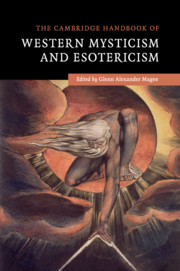Book contents
- Frontmatter
- Dedication
- Contents
- Acknowledgments
- Editor's Introduction
- List of contributors
- I ANTIQUITY
- II THE MIDDLE AGES
- III THE RENAISSANCE AND EARLY MODERNITY
- IV THE NINETEENTH CENTURY AND BEYOND
- 20 Spiritualism
- 21 H. P. Blavatsky and Theosophy
- 22 Rudolf Steiner and Anthroposophy
- 23 The Golden Dawn and the O.T.O.
- 24 G. I. Gurdjieff and the Fourth Way
- 25 C. G. Jung and Jungianism
- 26 René Guénon and Traditionalism
- 27 Via Negativa in the Twentieth Century
- 28 Contemporary Paganism
- 29 The New Age
- V COMMON THREADS
- Suggestions for Further Reading
- Index
- References
21 - H. P. Blavatsky and Theosophy
from IV - THE NINETEENTH CENTURY AND BEYOND
Published online by Cambridge University Press: 05 May 2016
- Frontmatter
- Dedication
- Contents
- Acknowledgments
- Editor's Introduction
- List of contributors
- I ANTIQUITY
- II THE MIDDLE AGES
- III THE RENAISSANCE AND EARLY MODERNITY
- IV THE NINETEENTH CENTURY AND BEYOND
- 20 Spiritualism
- 21 H. P. Blavatsky and Theosophy
- 22 Rudolf Steiner and Anthroposophy
- 23 The Golden Dawn and the O.T.O.
- 24 G. I. Gurdjieff and the Fourth Way
- 25 C. G. Jung and Jungianism
- 26 René Guénon and Traditionalism
- 27 Via Negativa in the Twentieth Century
- 28 Contemporary Paganism
- 29 The New Age
- V COMMON THREADS
- Suggestions for Further Reading
- Index
- References
Summary
Introduction
With the advent of H. P. Blavatsky's Theosophical Society in 1875, esoteric groups, long limited by coded language and secrecy, moved to what sociologist Edward Tiryakian has termed “the margin of the visible.” Through the work of the Theosophical Society, esotericist ideas found an easy conduit into mainstream society. While membership always remained small, its network of lodges served as the means to disseminate its philosophy. This has been a constant throughout modern Theosophy's existence: the primacy of getting the message out not only through lectures and classes, but also by its aggressive publishing program of books, magazines, pamphlets, and leaflets, often distributed free in the tens of thousands. Although Theosophy's initial impetus was for the recovery of an ancient wisdom tradition, it quickly redefined itself as a panacea for society's social and moral ills. Through its message of reincarnation and karma – or hope and responsibility, as Blavatsky defined it – the movement offered the opportunity of taking control of one's destiny and making a change in the world.
Blavatsky
Modern Theosophy's leading theorist was Helena Petrovna Blavatsky, often referred to as Madame Blavatsky, or by her initials, H. P. B. Born on August 12, 1831, in Ekaterinoslav in Southern Russia (now Dnipropetrovsk in the Ukraine), she was named after her mother, a novelist, and her grandmother, the Princess Helena Dolgorouky. Her childhood was a series of upheavals, moving from one place to another when her father, Captain Peter von Hahn, a cavalry officer, was transferred. After the death of her mother in 1842, she was sent to live with her maternal grandparents in Saratov, where her grandfather, Andrey Fadeyev, was governor of the province. At the age of seventeen, she surprised everyone by marrying Nikifor Blavatsky, lieutenant governor of the province of Erivan, a man twice her age. After a few months, she abandoned him and left for what would become a life of travel. She reappeared in Russia at the end of 1859, and after a few years she left again until 1872.
According to some accounts, those “veiled years” were spent traveling through Europe with the opera singer Agardi Metrovich, supporting herself by her considerable skills as a pianist. There was also rumor of an illegitimate child.
- Type
- Chapter
- Information
- The Cambridge Handbook of Western Mysticism and Esotericism , pp. 248 - 259Publisher: Cambridge University PressPrint publication year: 2016

